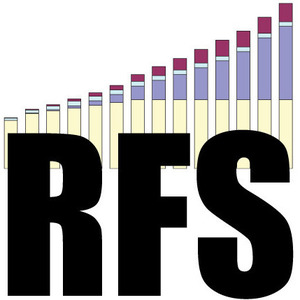White House releases timeline for RFS reset, other rules

October 19, 2018
BY Erin Krueger
The Trump administration has released estimated timelines for the development of three U.S. EPA rulemakings that pertain to the Renewable Fuel Standard and year-round E15 sales, including one that includes a “reset” of statutory blending targets.
The administration released a summary of its Fall 2018 Unified Agenda of Regulatory and Deregulatory Actions on Oct. 17. The agenda includes three rules of specific interest to the U.S. biofuel industry. One will propose fuel regulations changes to allow for year-round E15 sales and propose modifications to RFS renewable identification number (RIN) market regulations. The other two address the EPA’s yearly rulemakings to set annual renewable volume obligations (RVOs).
Information published by the Office of Management and Budget shows the EPA is expected to release a proposed rule to allow year-round E15 sales in February 2019, with a final rule scheduled to be issued by May 2019. An abstract of the future rulemaking indicates the EPA will propose regulatory changes to allow gasoline blended with up to 15 percent ethanol to take advantage of the 1-psi Reid vapor pressure (RVP) waiver that currently applies to E10 during the summer months. The rule will also include proposed “regulatory changes to modify certain elements of the [RIN] compliance system under the [RFS] program, in order to improve RIN market functioning.”
Advertisement
The agenda also includes an update of the currently pending proposed rule to set 2019 RFS RVOs, as well as the 2020 RVO for biomass-based diesel. The proposed rule was released in July, and a public comment period closed Aug. 17. Information published by the OMB states that rule is expected to be finalized in November, by the statutory deadline.
Furthermore, the agenda includes information on an RFS reset scheduled to be proposed in January 2019. Information published by the OMB states that “under the statutory provisions of governing the [RFS] program, EPA is required to modify, or reset, the applicable volume targets specified in the statute for future years if waivers of those volumes in past years met certain specified thresholds. Those thresholds have been met or are expected to be met in the near future. As a result, EPA is proposing a rulemaking that will propose modifying the applicable volume targets for cellulosic biofuel, advanced biofuel, and total renewable fuel for the years 2020-2022.” The rule is also expected to include proposed biomass-based diesel RVOs for 2021 and 2022. “Since the timetable for this rulemaking overlaps that for annual standard-setting rulemakings, this rulemaking will also include the applicable percentage standards for 2020,” the OMB said on its website. “Finally, this rulemaking includes several regulatory amendments designed to provide clarity and increase opportunities for renewable fuel production.” The rule is scheduled to be proposed in January and finalized by December 2019.
Advertisement
Related Stories
While final IRS guidance is still pending, the foundation of the 45Z program is well defined. Clean fuel producers should no longer be waiting; they can now move forward with critical planning and preparation, according to EcoEngineers.
The IRS on July 21 published a notice announcing the 2025 calendar-year inflation adjustment factor for the Section 45Z clen fuel production credit. The resulting adjustment boosts maximum the value of the credit by approximately 6%.
The U.S. Senate on July 23 voted 48 to 47 to confirm the appointment of Aaron Szabo to serve as assistant administrator of the U.S. EPA’s Office of Air and Radiation. Biofuel groups are congratulating him on his appointment.
U.S. Secretary of Agriculture Brooke L. Rollins today announced the reorganization of the USDA, refocusing its core operations to better align with its founding mission of supporting American farming, ranching, and forestry.
The U.S. Department of Energy’s Office of Energy Efficiency and Renewable Energy is soliciting public comments on a preliminary plan for determining provisional emissions rates (PER) for the purposes of the 45Z clean fuel production credit.
Upcoming Events










